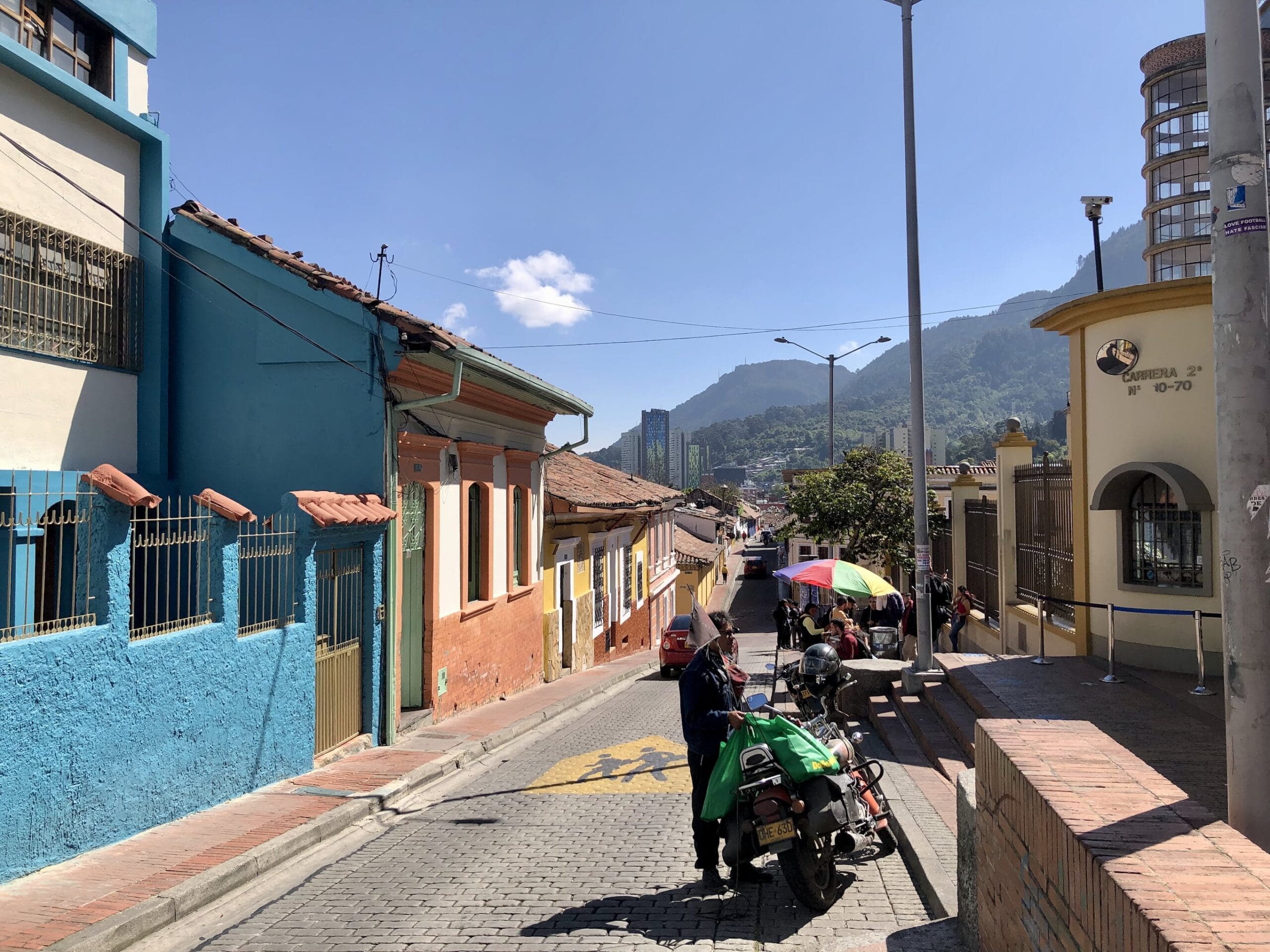The late August afternoon was overcast as our KLM flight touched down in Bogotá. After a grueling 15-hour journey from Europe including layovers, we wearily lifted ourselves from our economy seats. The post-landing routine was straightforward enough: withdrawing cash from an airport ATM, followed by an unexpectedly lengthy immigration process where our passports mysteriously disappeared for a while (we never did find out why). Finally, we caught a taxi from inside the terminal.
Official airport taxis have a set rate system and can be arranged at designated stands inside the terminal. Avoid accepting rides from unofficial taxi drivers approaching you outside or inside the terminal. Prices are around 40,000 COP (~9 USD) to the center of the city as of 2024.
Any remaining fatigue evaporated the moment we stepped out of El Dorado International Airport. This wasn’t just our first time in Bogotá or Colombia – it was our South American debut. It might sound cliché, but when you travel somewhere distant, even the air feels different during those first few breaths. Sure, in Bogotá’s case, the heavy air pollution might have contributed to that sensation, but that’s beside the point. We climbed into our taxi, braved the city’s notorious traffic jams, and after reaching our accommodation, took just enough time to freshen up before diving headfirst into exploring the city.
In this guide, we’ll walk you through our next three days: what we saw, where we ate, and what we experienced. While we don’t claim this is the definitive way to discover Bogotá, following our itinerary will ensure you don’t miss the city’s essential sights if you’re short on time. We’ll also share some bonus tips for those lucky enough to have a longer stay in Colombia’s sprawling capital.
Plaza de Bolívar: Exploring Bogotá’s Historic Center and Must-See Landmarks
Plaza Bolivar is the beating heart of Bogotá – a spot virtually every visitor to the city will encounter at least once. The square is dominated by Colombia’s largest cathedral, bearing the impressively long official name “Catedral Basílica Metropolitana y Primada de la Inmaculada Concepción y San Pedro de Bogotá.” Construction began in 1572, though the current structure has stood proudly since 1823. Just adjacent stands the more modest but historically richer Capilla del Sagrario, which predates its grand neighbor by over a century.
A clockwise turn reveals the Capitolio Nacional de Colombia, the country’s congressional building. Continue turning, and you’ll face the neoclassical Palacio Liévano, Bogotá’s current city hall. Complete the circle to find the Palacio de Justicia de Colombia, the Supreme Court building. This structure’s relatively modern appearance hints at a darker chapter in Colombian history – its predecessor was destroyed in 1985 during a military operation to reclaim the building from M-19 guerrillas who had seized it on November 6.
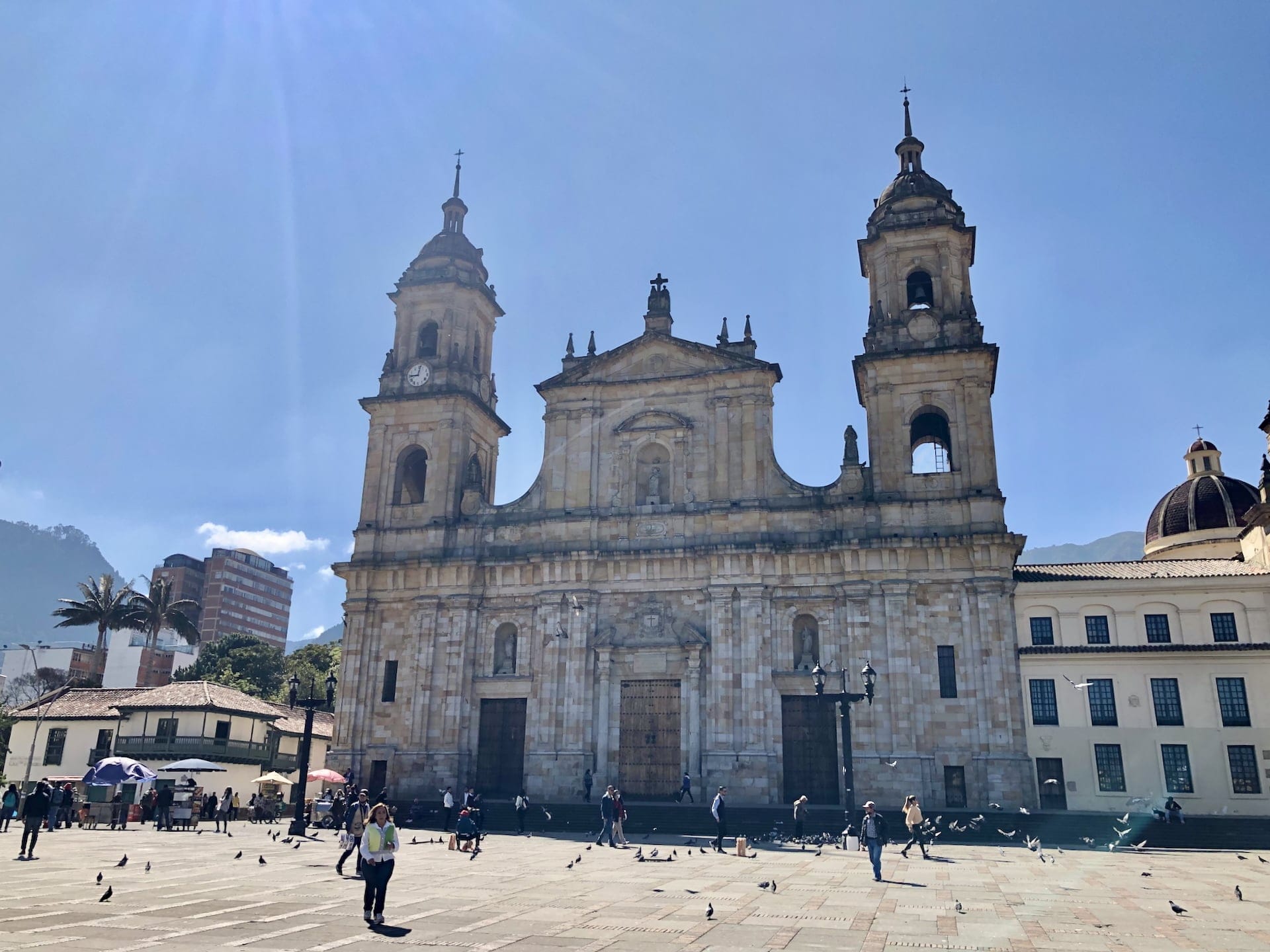
The square bustles with vendors selling food and drinks, and yes, you can get that quintessential South American Instagram shot with a llama – for a price. However, for a more authentic culinary experience, walk about 70 meters (200 ft) east from the square’s corner, past the cathedral along Calle 11, to La Puerta Falsa. This historic establishment, operating since 1861, serves perhaps the finest ajiaco (specifically ajiaco santafereño) in the country’s interior. This hearty chicken soup, enriched with corn, three varieties of potatoes, and local spices, comes accompanied by rice, capers, and avocado. For the truly hungry, add a banana leaf-wrapped tamal. Word of caution: several similarly named restaurants have sprung up nearby trying to capitalize on Puerta Falsa’s reputation – keep your eyes peeled for the original.
La Candelaria: Colorful Streets and the Botero Museum
You’ve likely encountered those distinctive sculptures and paintings featuring humorously rotund human figures and animals. These are the works of Fernando Botero, self-proclaimed “the most Colombian of Colombian artists.” While Botero, who passed away in 2023 at 91, hailed from Medellín (where many of his sculptures still stand), the Museo Botero houses the most comprehensive collection of his unique “Boterismo” style. The best part? Admission is completely free.
La Candelaria, the old town district housing the Botero museum, deserves thorough exploration. Its charming streets lined with vibrantly colored houses embody exactly what a distant traveler might imagine of a historic South American city. Lose yourself in the maze of calles and carreras, browsing local vendors, shops, and restaurants while soaking in the magical atmosphere. We stumbled upon an excellent restaurant serving some kind of local fish soup as part of their lunch menu – while we unfortunately neither photographed nor remembered its name, the incredible hospitality (including complimentary shots) from both staff and fellow diners left an indelible impression.
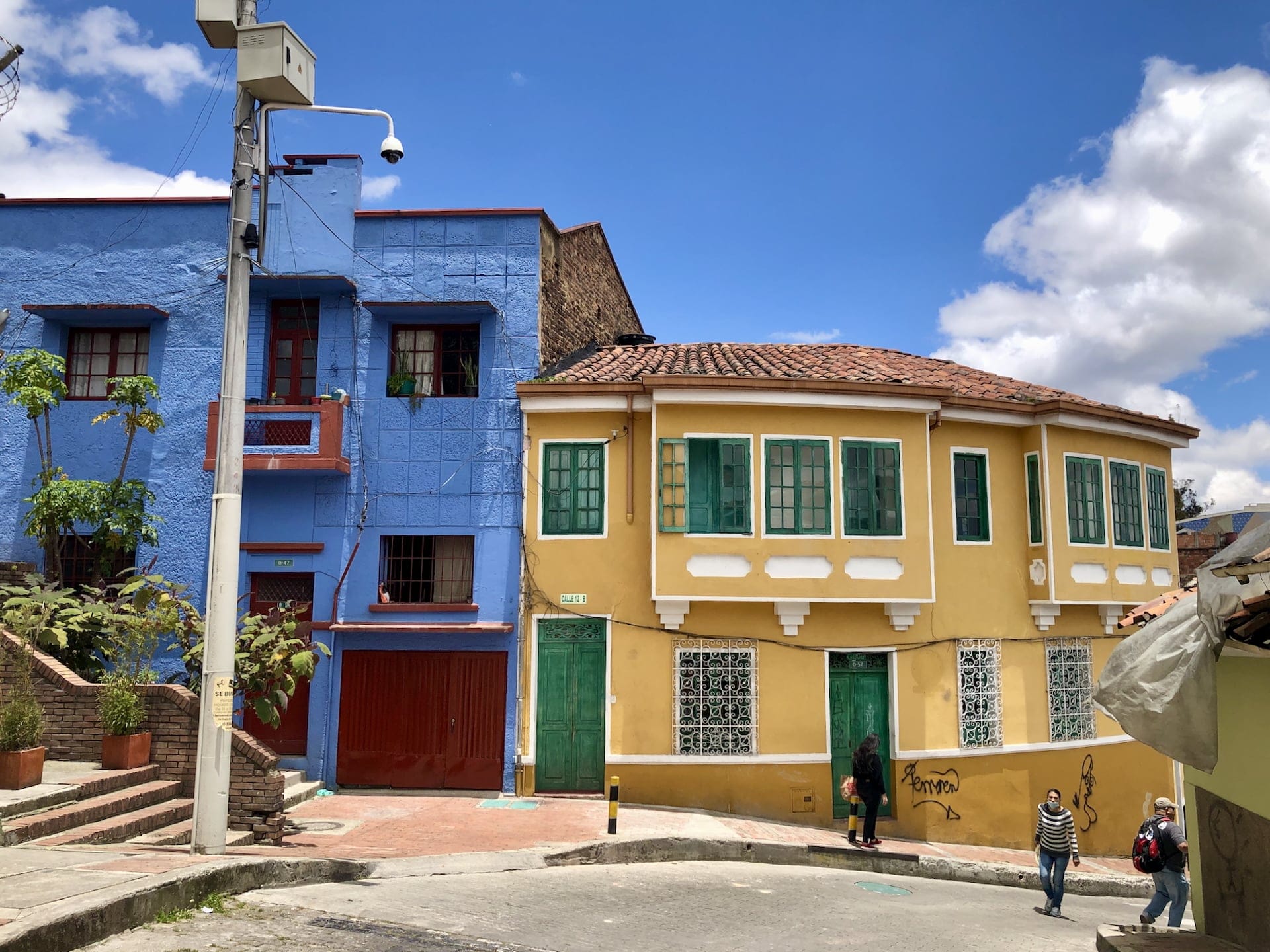
During your wanderings, don’t miss Plazoleta del Chorro de Quevedo, a tiny square near Monserrate’s base. Here you’ll find the diminutive Ermita de San Miguel del Principe church and can sample chicha, a traditional beverage with thousands of years of history. This fermented corn drink contains varying amounts of alcohol – exact content is hard to determine as it was officially banned in Colombia in 1949 and is now home-brewed. Nevertheless, bars around and on the square openly sell it. Whether this had any connection to the quite visible police raid we witnessed during our visit remains a mystery…
Monserrate Hill: Breathtaking Views Over Bogotá
Rising 3,152 meters (10,340 ft) above sea level, Monserrate hill stands sentinel on Bogotá’s eastern edge, right beside Guadalupe. Once sacred to the Muisca people, its summit now cradles the pristine white Basílica Santuario del Señor Caído de Monserrate. From this lofty perch, the views are nothing short of spectacular. While some claim you can see all of Bogotá from here, the reality is even more impressive – the city is so vast, sprawling around the mountain range so completely, that it stretches beyond the horizon in every direction. It’s here, perhaps more than anywhere else, that you truly grasp the sheer magnitude of Colombia’s capital.
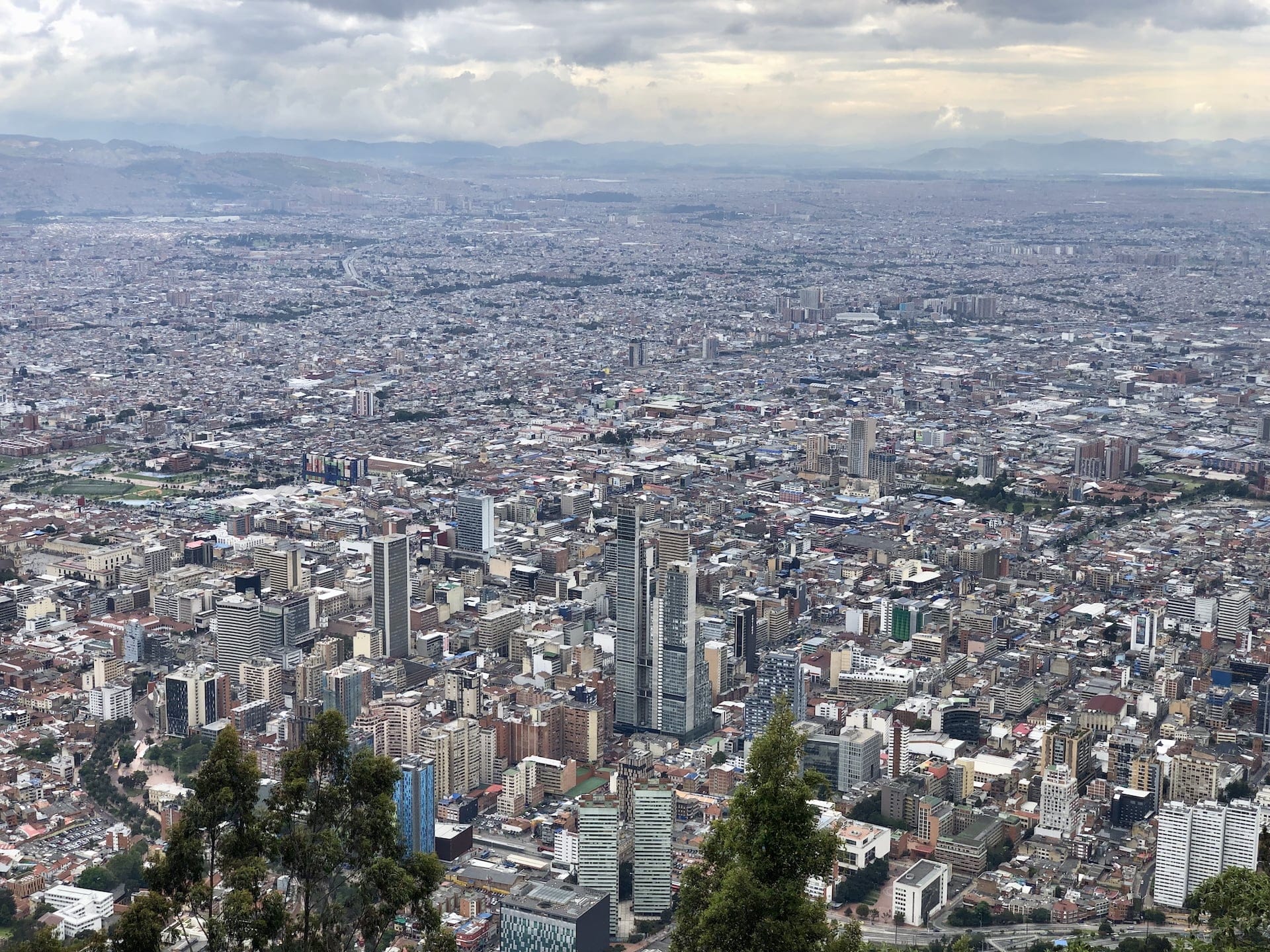
Three paths lead to the summit: on foot, by funicular, or via cable car (teleférico). We strongly recommend either of the mechanical options for the ascent – while the elevation gain might not seem daunting, the 1,500 steps combined with the altitude can challenge even seasoned hikers, especially if you’ve just arrived from lower elevations. We opted for the funicular, though not by choice – the cable car wasn’t operating during our Wednesday visit, despite Monday being its usual maintenance day. Fortunately, both transport options share the same starting point, making it easy to switch between them. The descent on foot might tempt you, but we skipped this option as darkness was approaching (we caught the last funicular down). While we can’t personally verify the reports of the area being unsafe for pedestrians after dark, we chose not to test the theory.
At the summit, the panoramic views will likely command your immediate attention. Even through the clouds that shrouded our visit, the vistas proved mesmerizing. The church interior welcomes exploration, and the mountain’s trails wind through surprisingly lush vegetation – a welcome “oasis” after the urban intensity of downtown Bogotá.
Gold Museum: A Must-Visit Cultural Treasure
“I’ve seen enough gold, and I’m not really interested in it anyway” – these were my thoughts when Peter suggested visiting the Museo del Oro near Santander Park in the business district. What I expected to be a mundane display of precious metals turned out to be one of the city’s most captivating attractions.
Let’s be clear: there is gold here. Lots of it. Pre-colonial tools and art objects crafted from precious metals fill the exhibits. The sheer volume is staggering – it’s mind-boggling to imagine how much treasure this country must have held originally, given that after centuries of plunder, such wealth remains. Even more astonishing? Visitors see only about 10% of the complete collection, roughly 6,000 pieces out of a total exceeding 55,000 gold objects.
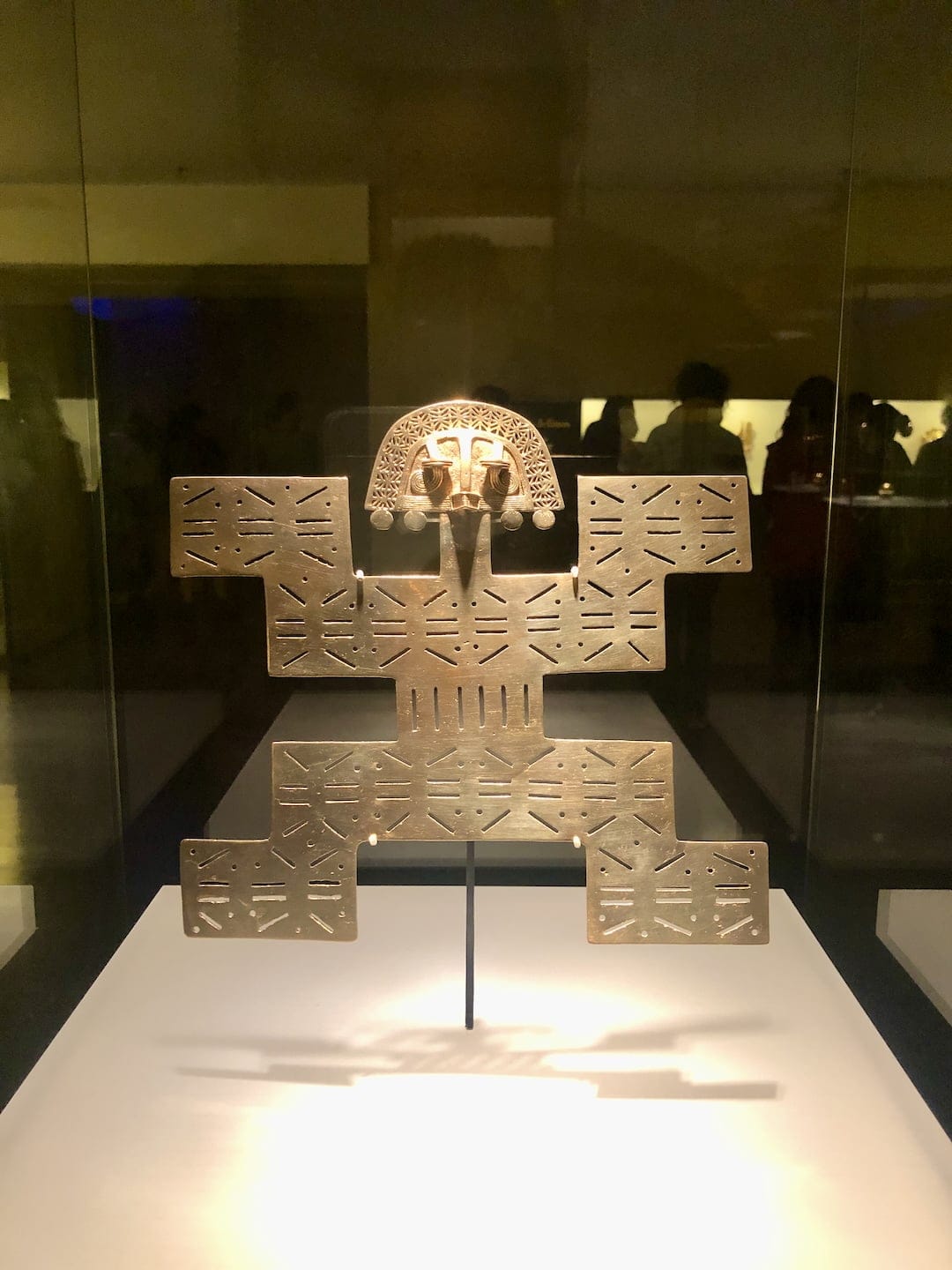
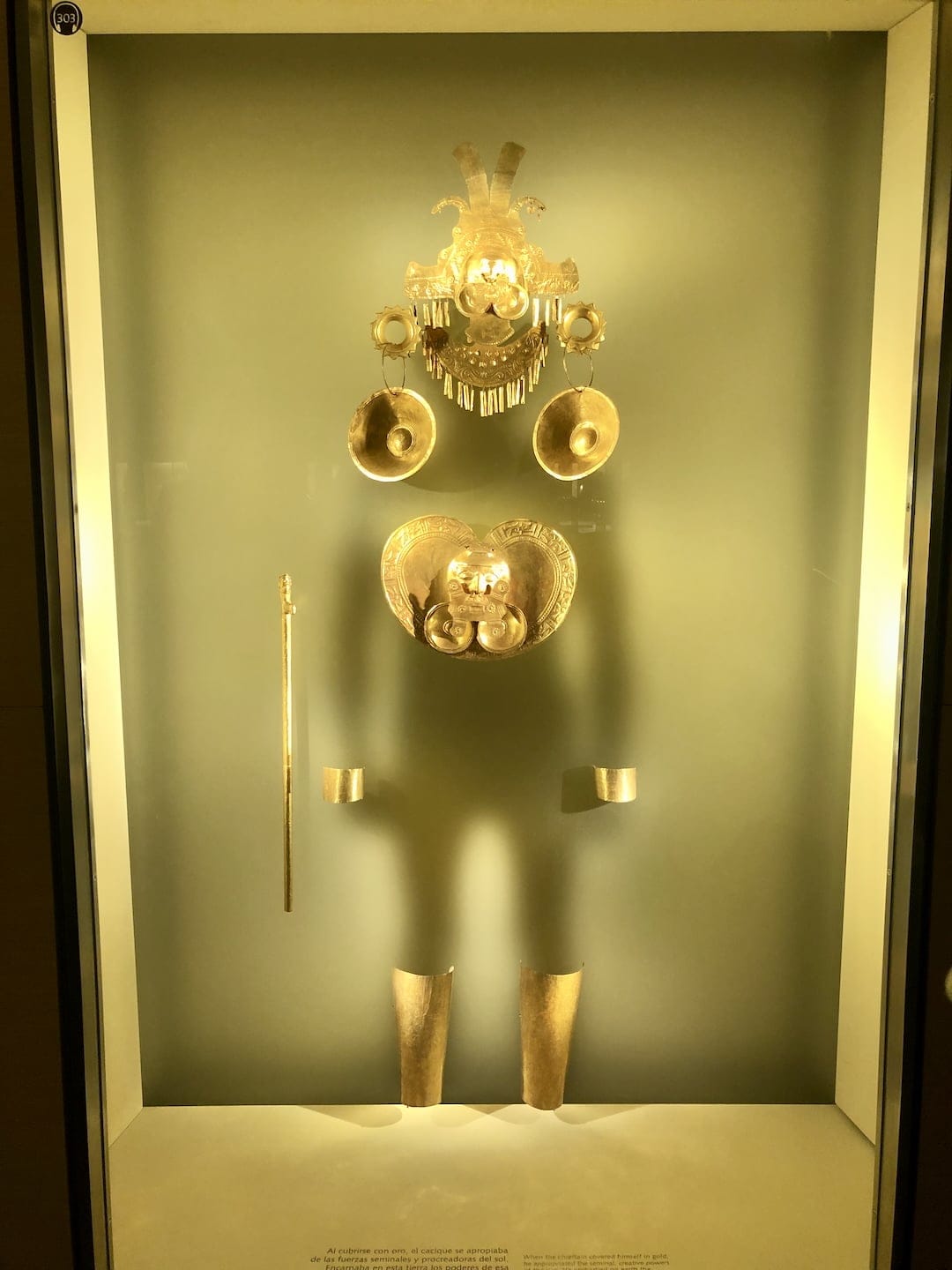
But the museum offers far more than just gleaming displays. It’s a window into Colombia’s rich history, showcasing the sophisticated cultures that thrived here before European arrival. The folk art motifs prove particularly fascinating. Just when you think you’ve seen it all, the museum delivers its most surprising installation: a circular room featuring a “pit” or “shaft”-like space where gold pieces appear randomly scattered, as if they simply couldn’t fit in the traditional display cases.
The museum is closed on Mondays, and the entrance fee is quite reasonable (around the equivalent of a few US dollars). Visit in the morning to avoid the larger afternoon crowds.
Chapinero District, Zona Rosa, and Nightlife
Venture north from the historic center to discover the Chapinero district and Zona Rosa. The latter’s boundaries remain somewhat fluid – technically, it spans from around Calle 86 to Calle 80 between Carrera 11 and Carrera 15, but the area’s vibrant mix of bars, restaurants, nightclubs, and shopping centers spills well beyond these borders.
The atmosphere here differs markedly from La Candelaria’s colonial charm or the business district’s corporate polish. While backpackers tend to gravitate toward this area, the zone around Parque 93 attracts a more upscale crowd with its high-end dining establishments and sophisticated bars. Our experience here was admittedly brief – we explored Zona Rosa on our first evening, with our most vivid memory being the enormous portion of chicharrón we enjoyed with our beers, hardly qualifying as a light dinner by any standard.
If you’re planning a night out in Zona Rosa, it’s best to use ride-sharing apps or authorized taxis, particularly late at night. The area is generally safe but staying aware of your surroundings is always wise in any major city.
Free Walking Tours: Understanding Local History
We’re firm believers in starting any city exploration with a free walking tour – these local-led excursions often reveal insights you won’t find in guidebooks or online searches. They’re invaluable for getting your bearings, understanding public transport, discovering local cuisine, and developing a deeper appreciation for your destination. While “free” implies no cost, remember that tipping your guide is customary and appreciated.
In Bogotá, Beyond Colombia’s tours stand out. While all their offerings impress, if you can only choose two, opt for the political tour (Colombian Conflict Tour) and the graffiti tour. If time permits just one, make it the political tour: while Colombia’s turbulent history is well-documented, there’s something profound about hearing these stories at the actual locations from locals whose family members lived through these events. Be prepared for some passionate discussions – don’t be surprised if passersby interject with their own perspectives on which guerrilla groups were right or wrong, or debate the nuances of left-wing versus right-wing politics.
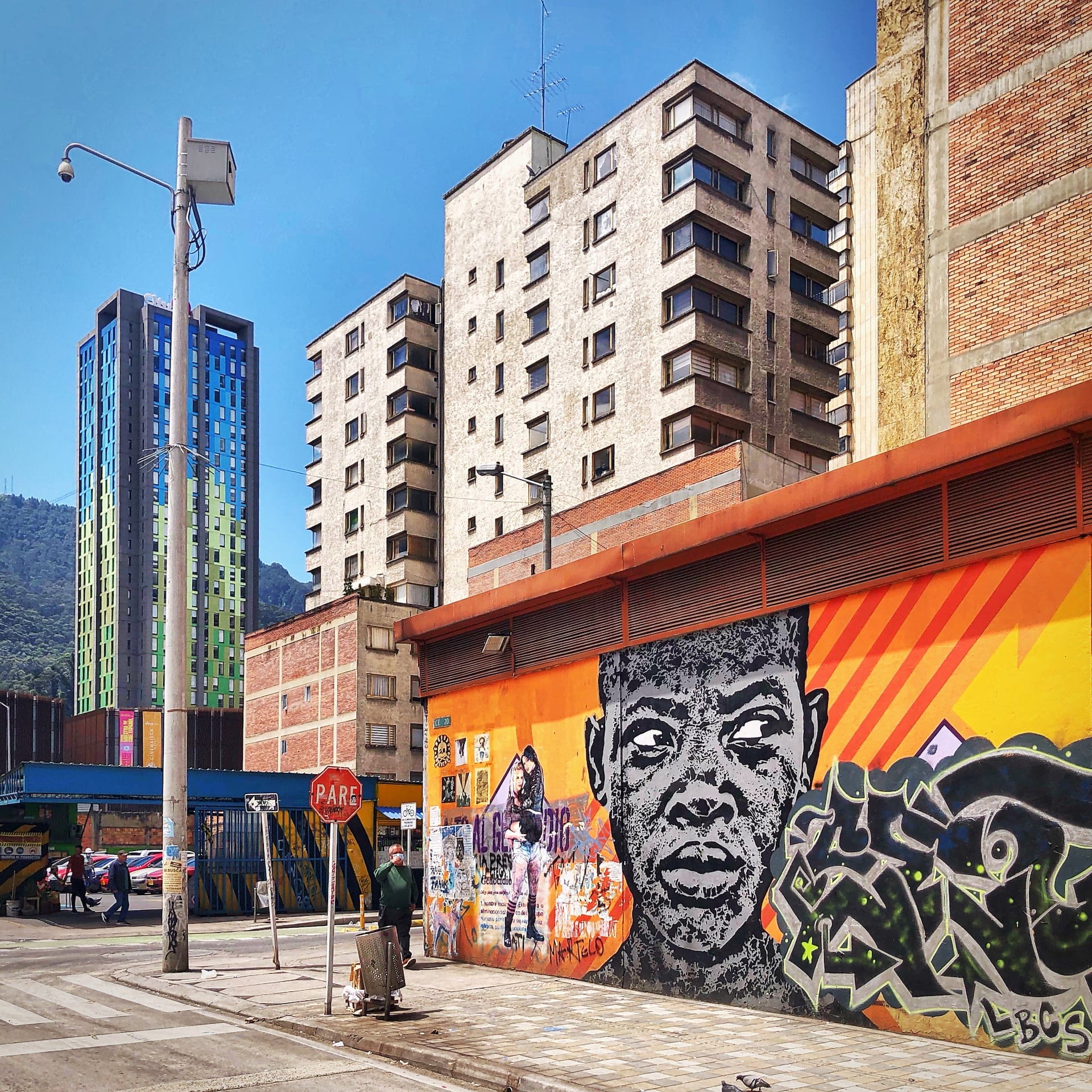
Bogotá’s reputation as a street art mecca becomes immediately apparent during the graffiti tour. The city showcases incredible murals, some on an absolutely massive scale. Many are completely legal – businesses and restaurants often commission these works, and even major development projects incorporate street art to enliven otherwise monotonous facades. While the tour covers the major highlights, guides happily direct enthusiasts toward additional artistic treasures throughout the city.
Beyond Colombia also offers a general city tour and a street food tour. While we’d consider these optional, they’re worth considering if your schedule allows.
Other Attractions Worth Considering
Like any great city, Bogotá rewards aimless wandering and cultural immersion. While we focused on the highlights above during our three-day visit, your interests might lead you elsewhere. Here are some additional suggestions:
- The Botanical Garden (Jardín Botanico de Bogotá) showcases Colombia’s diverse flora
- The adjacent Parque Metropolitano Simón Bolívar offers a green escape from urban life
- Sunday’s Ciclovía transforms 120 km (75 mi) of city streets into a cyclist’s paradise – including Carrera 7 between 7 AM and 2 PM (remember, you’re at 2,640 meters/10,000+ ft!)
- The Museo Nacional de Colombia not far from the Gold Museum provides deep insights into Colombian history
- The free Museo de Bogotá on Carrera 4 chronicles the city’s evolution
- The striking Santuario Nuestra Señora del Carmen church on Carrera 5 in La Candelaria deserves a visit
- Various markets dot the city – we explored one in La Candelaria (location forgotten), but the Sunday Mercado de las Pulgas de Usaquén comes highly recommended, though it’s somewhat off the beaten path
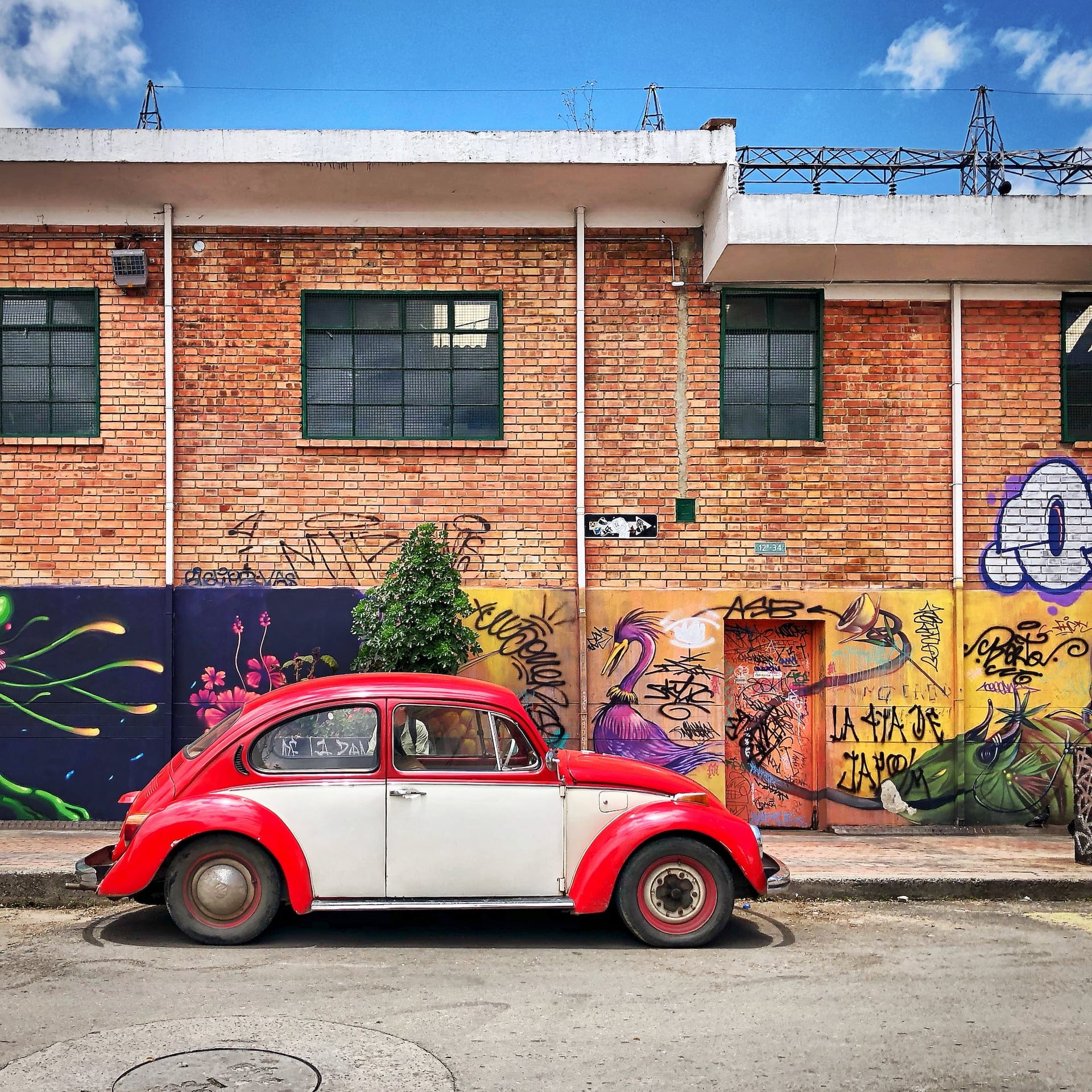
For those with extra days, popular day trips include the salt cathedral (Catedral De Sal De Zipaquirá), coffee farm tours, or visits to La Chorrera, Colombia’s highest waterfall at 590 meters (1,935 ft). We didn’t manage these ourselves, but they’re consistently well-reviewed.
This concludes our personal account of Colombia’s captivating capital. If you’re planning your first visit and feeling as overwhelmed as we initially did, check out our companion article summarizing essential Bogotá knowledge.
